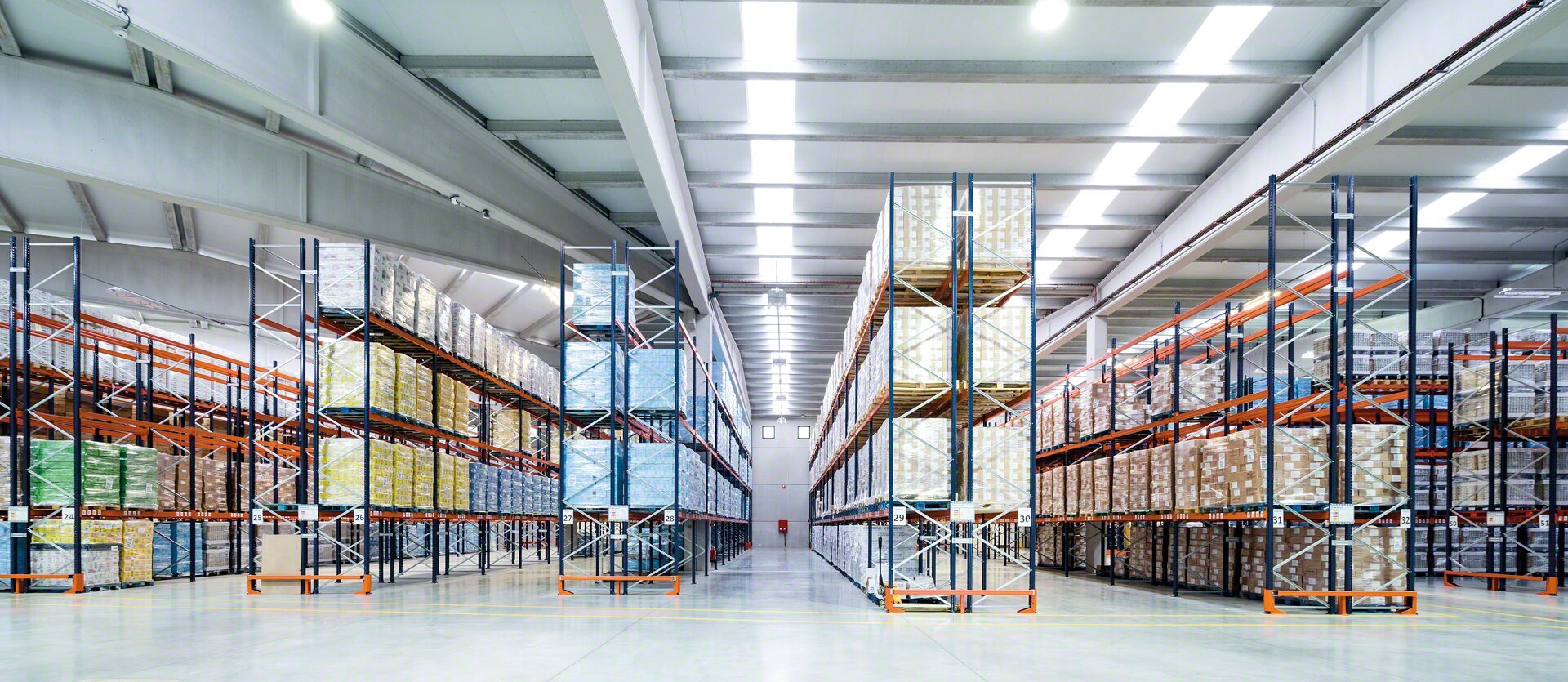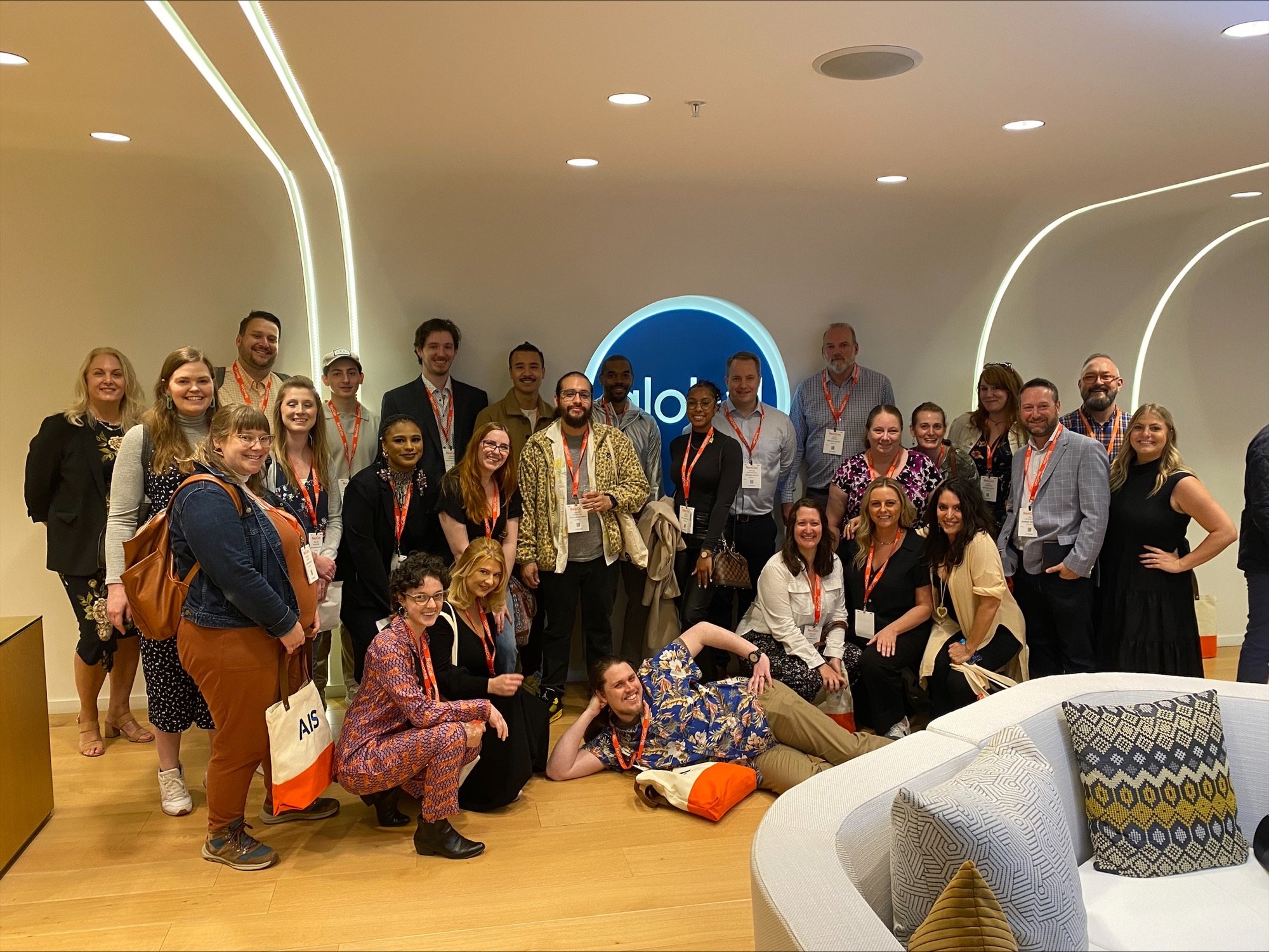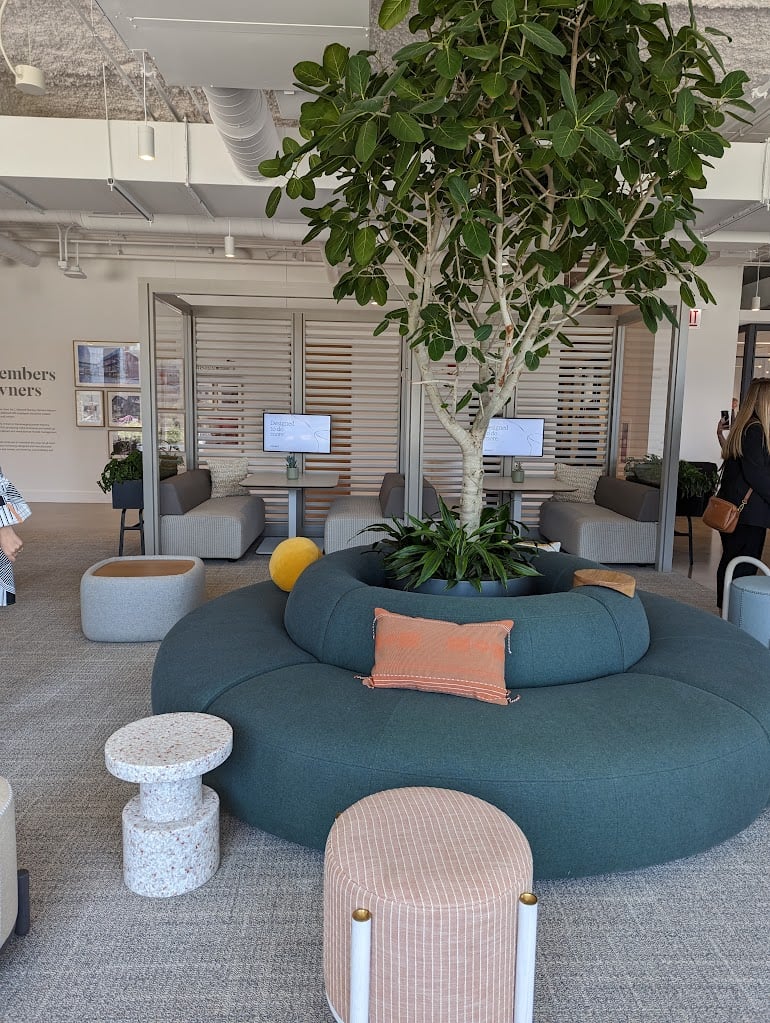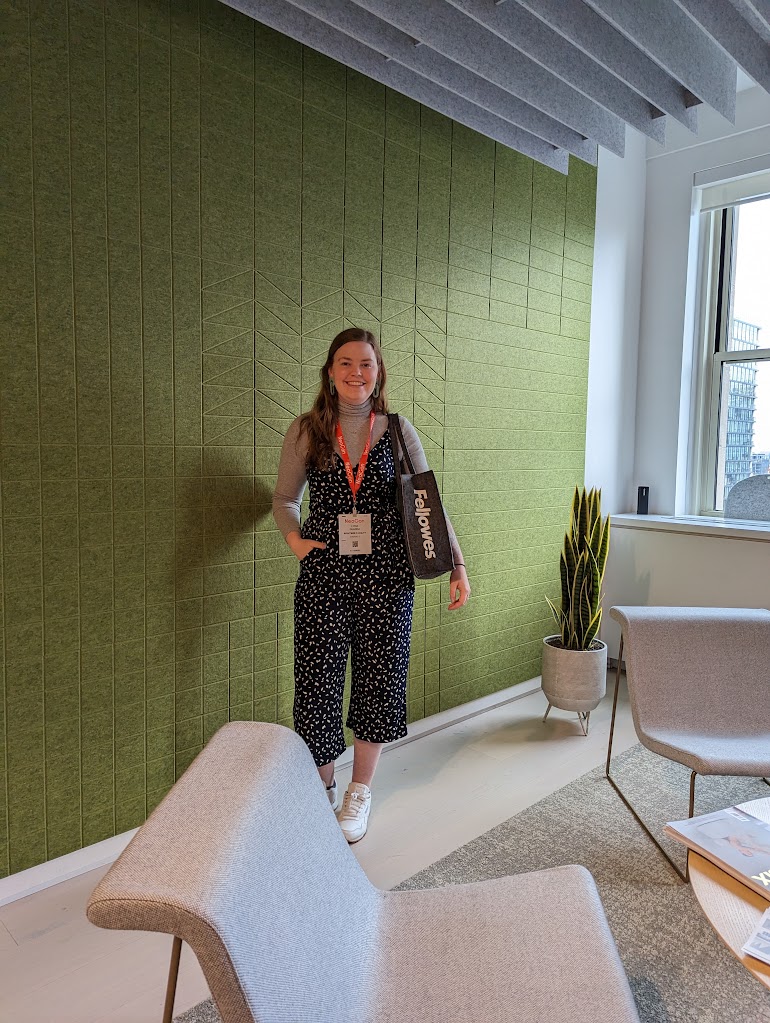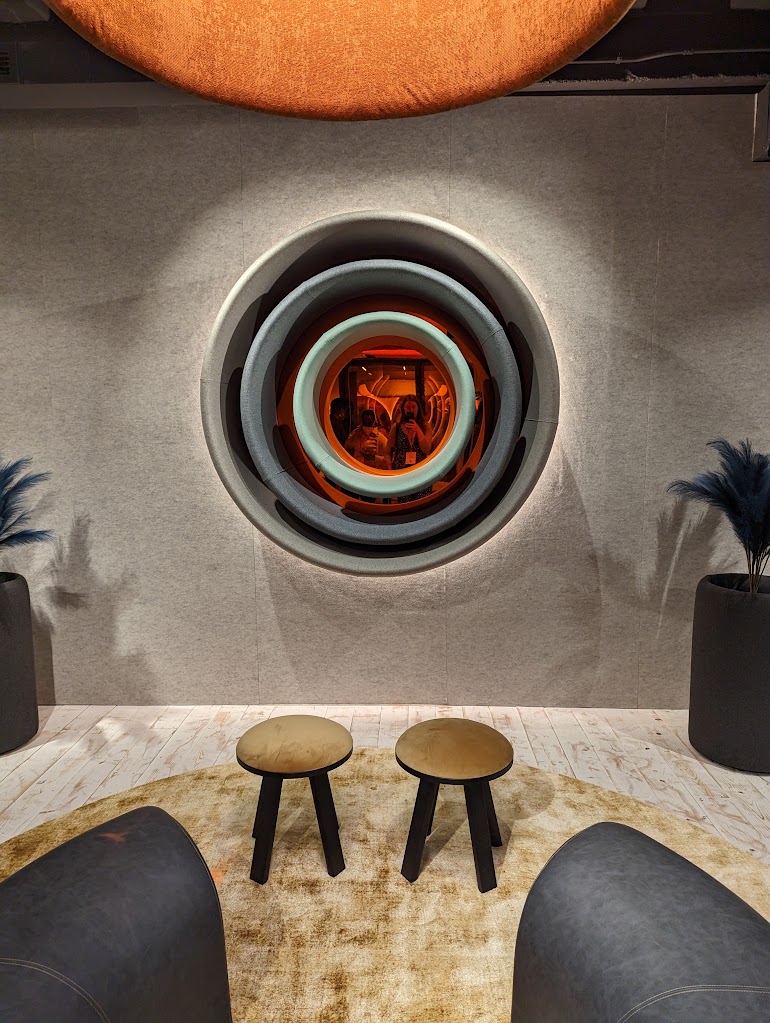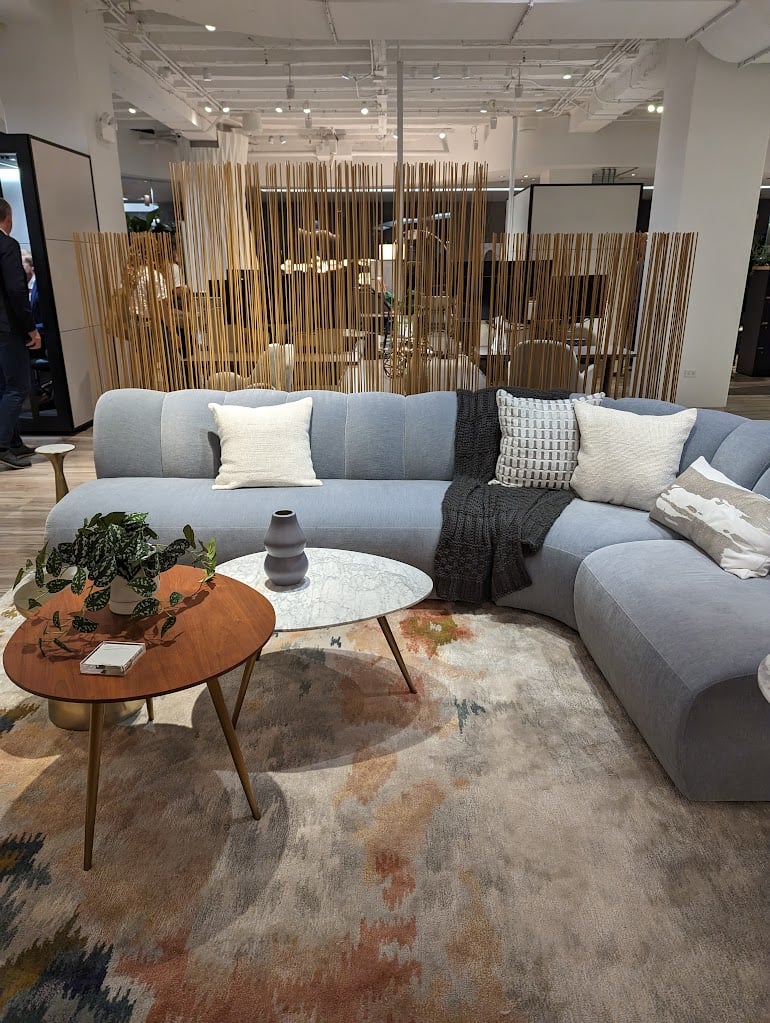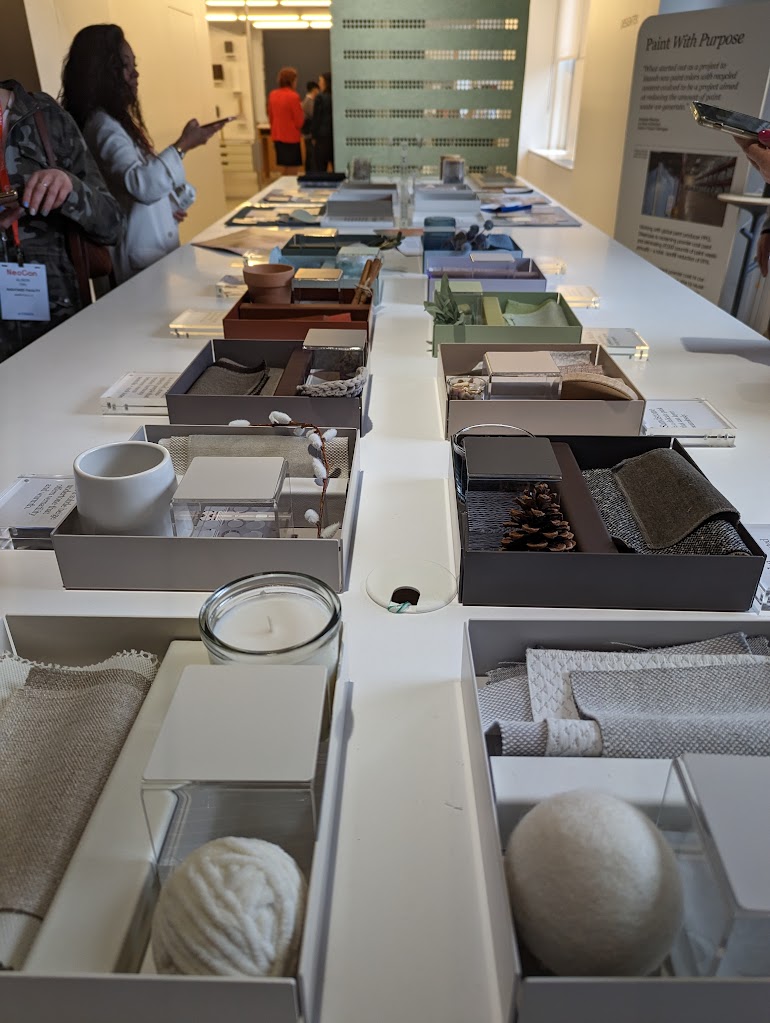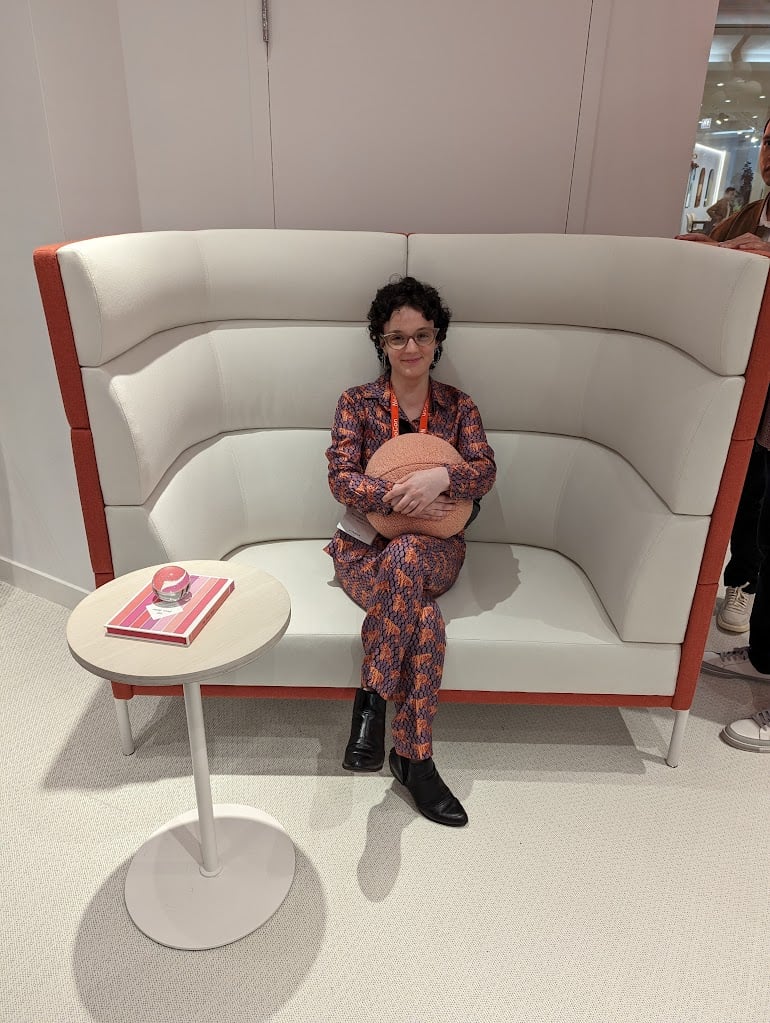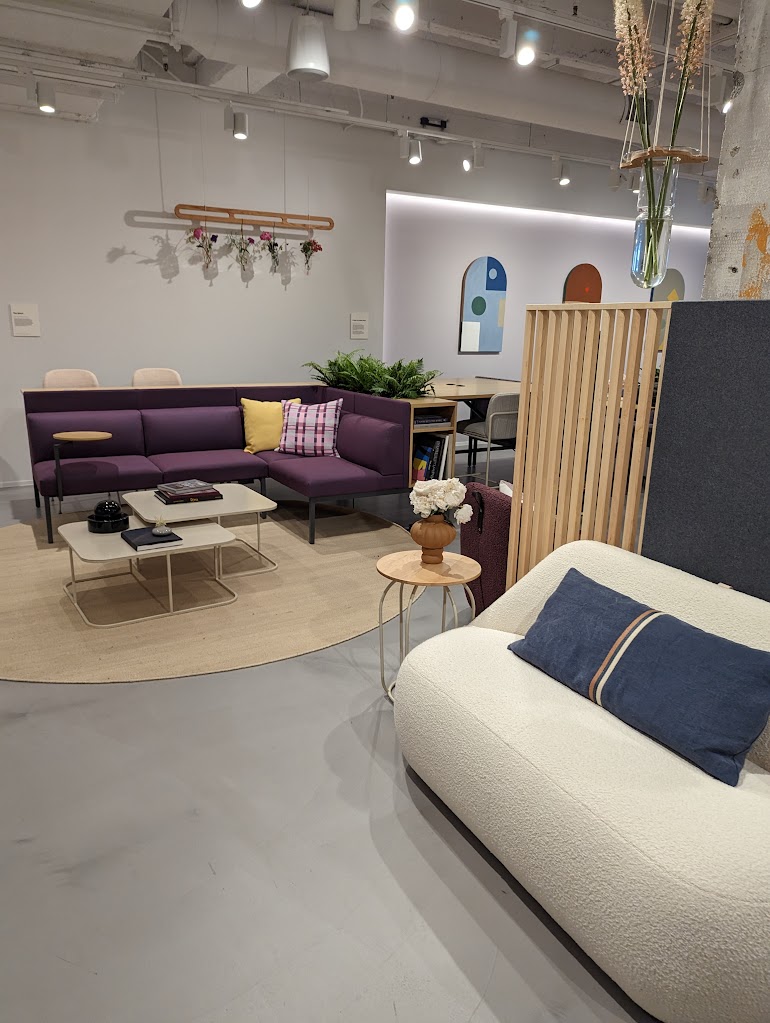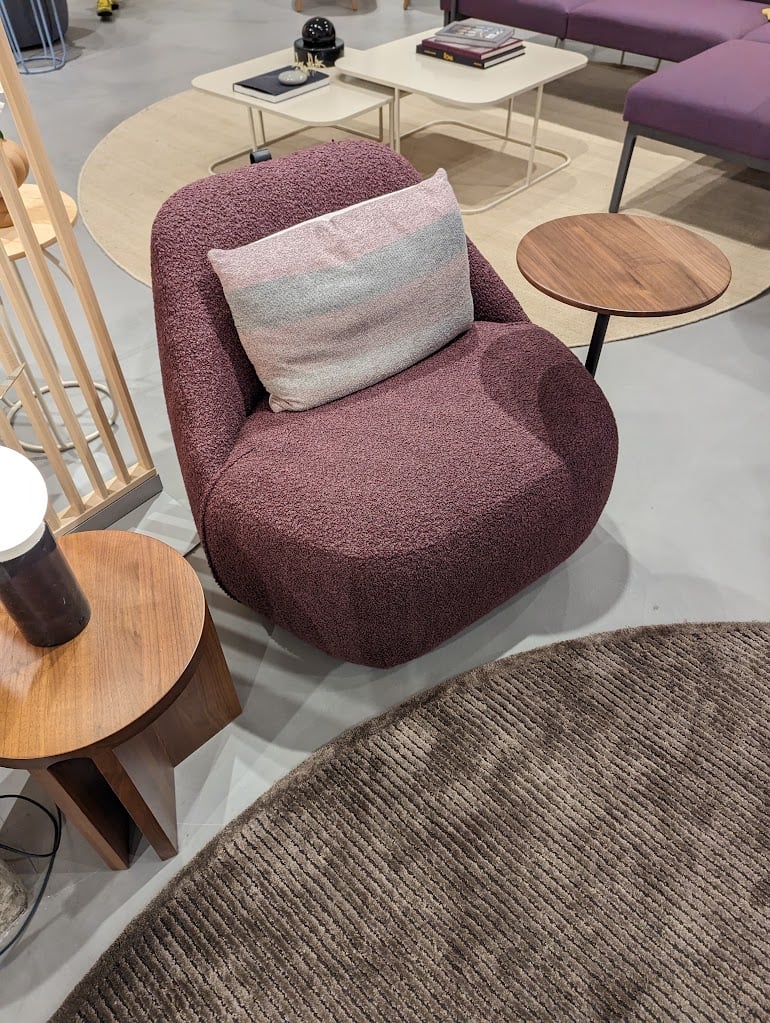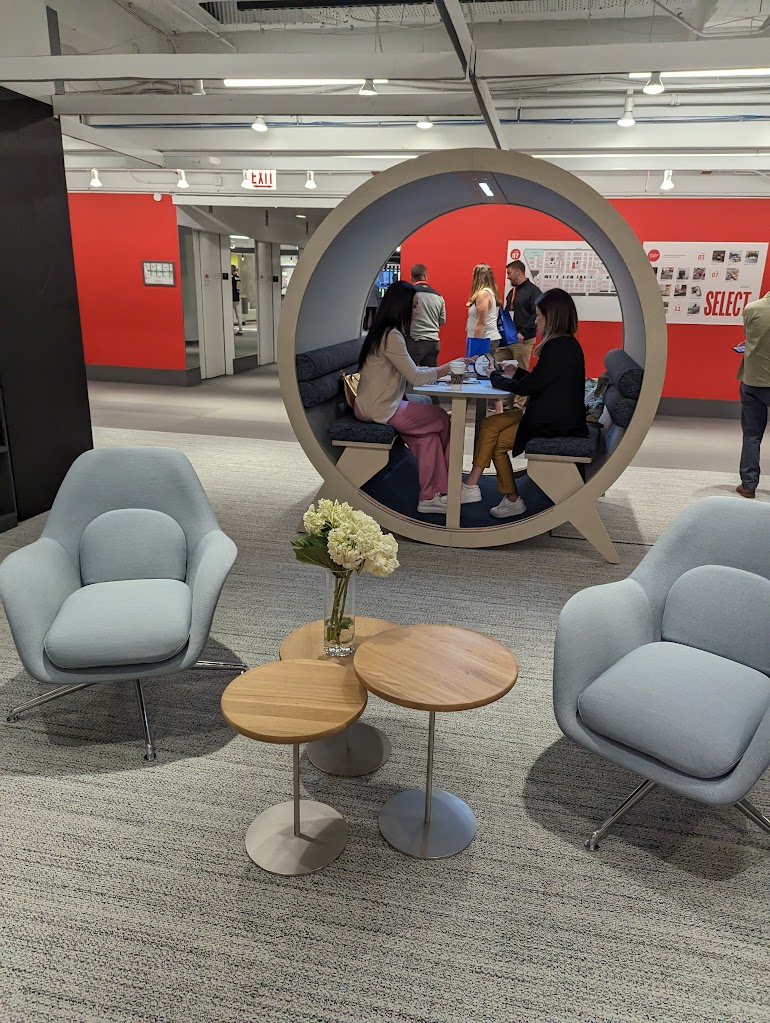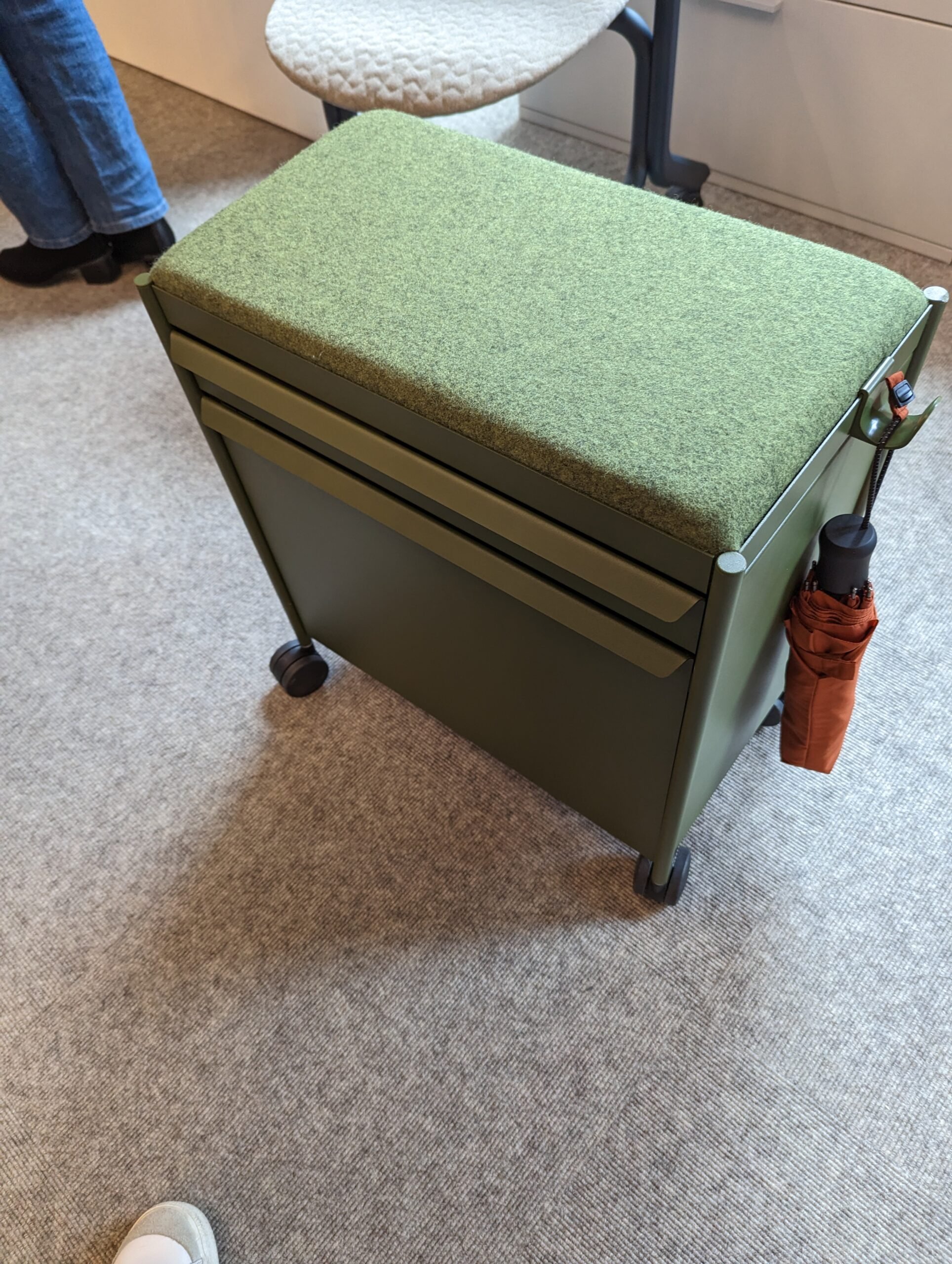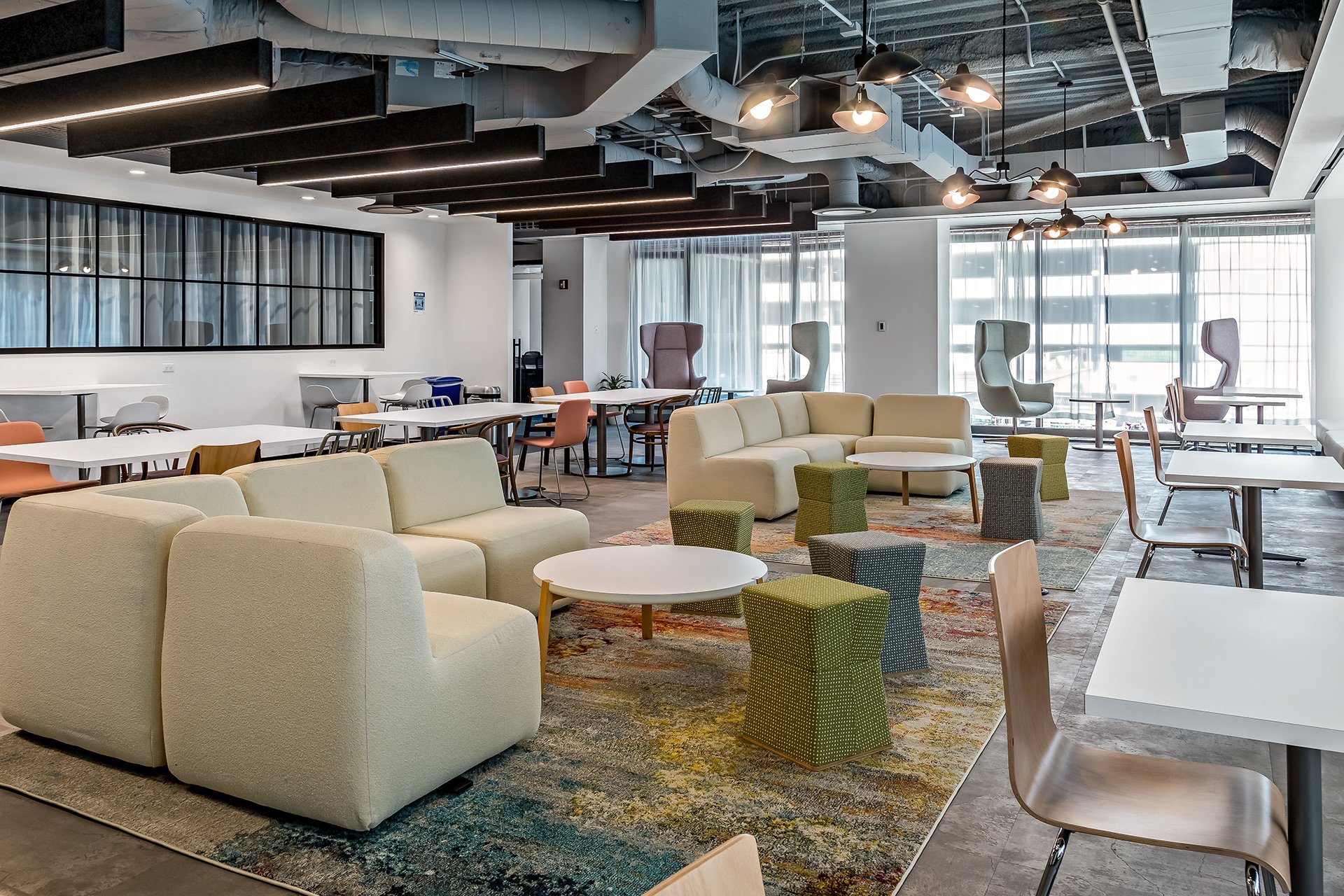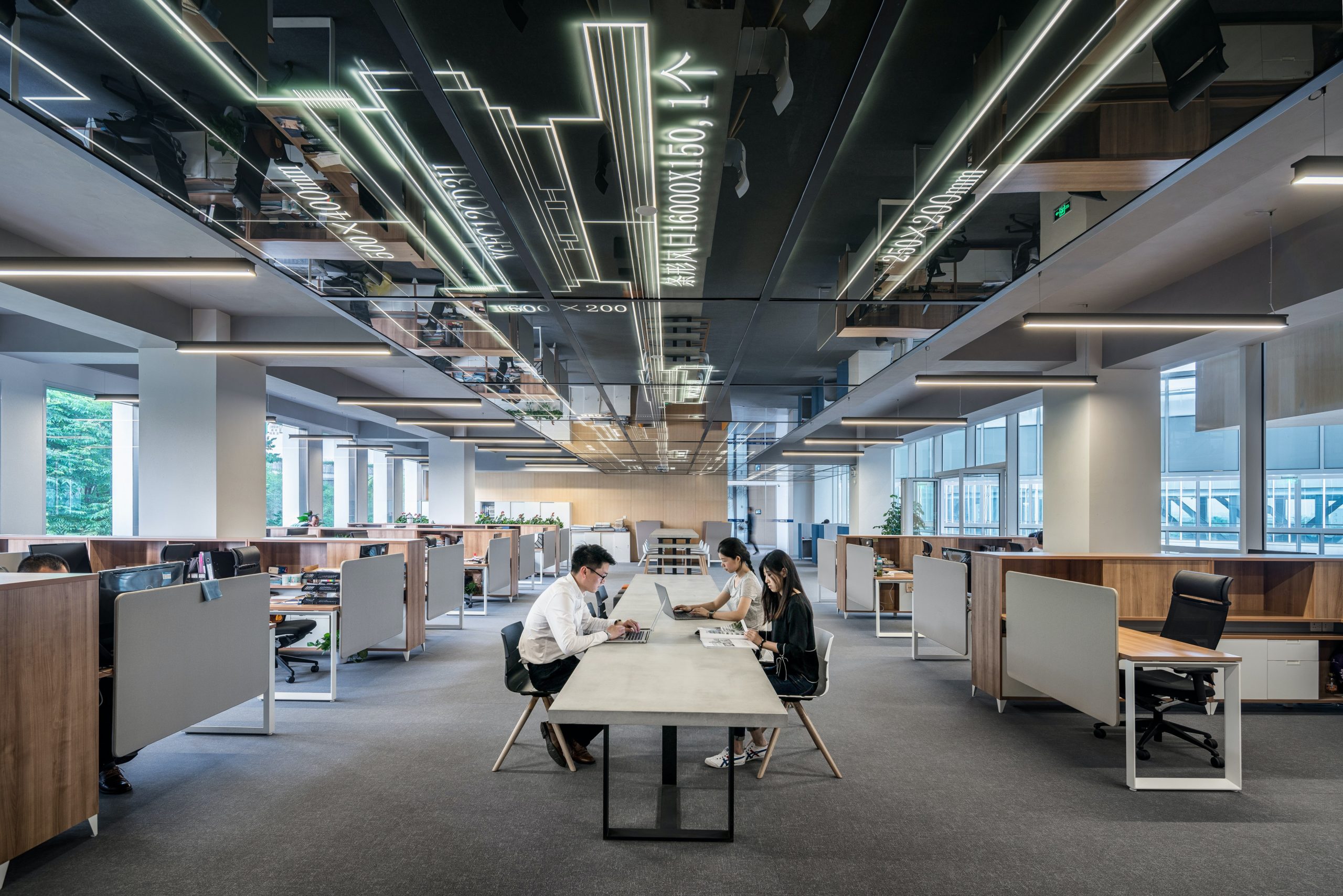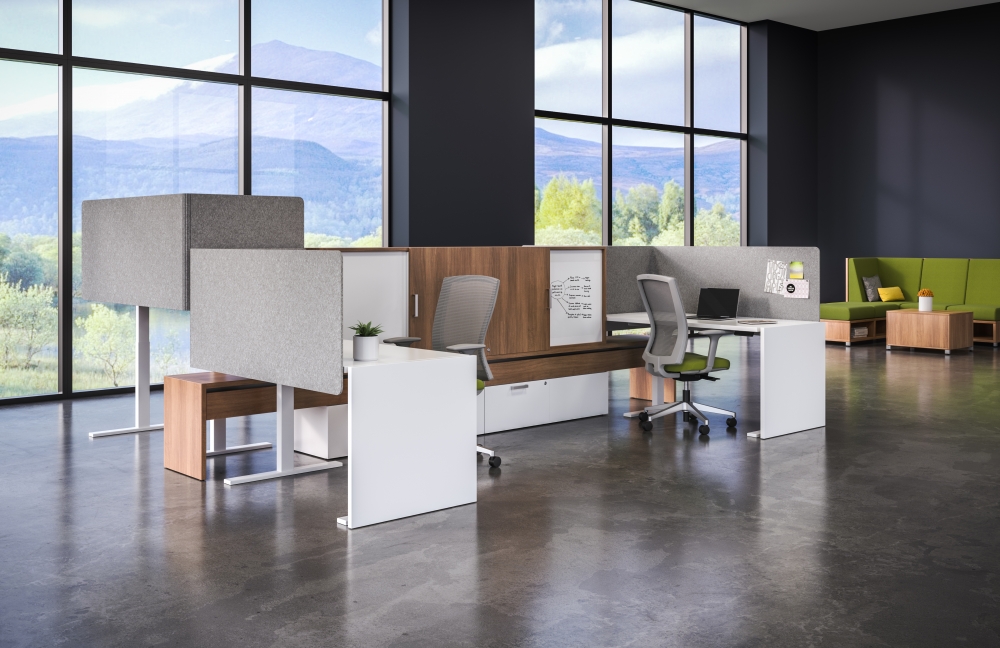NeoCon, the premier commercial interiors trade show, never fails to showcase the latest trends and innovations in the world of design and architecture. As we delve into the trends that emerged from NeoCon 2023, it becomes apparent that this year’s offerings are a delightful blend of nostalgia and contemporary creativity. From captivating colors to dynamic shapes and ingenious product concepts, the design community has once again pushed the boundaries of what is possible. Join us as we explore the standout trends that will shape commercial interiors in the coming months.
NeoCon 2023 presented a refreshing color palette that captivated attendees. Designers embraced nature-inspired hues, with greens reminiscent of lush foliage, blush tones evoking gentle warmth, mustard adding a vibrant touch, and rust/clay shades creating a grounding, earthy atmosphere. This harmonious blend of colors creates a soothing and inviting environment, offering a respite from the hustle and bustle of the outside world.
Embracing Contrasts and Textures:
Intriguing combinations of colors and materials took center stage at NeoCon 2023. Two-toned designs provided a visually striking contrast, infusing spaces with a sense of dynamism. Mixed materials, such as combining wood and metal or fabric and leather, brought depth and character to furniture and decor. Boucle fabric, with its plush texture, made a strong comeback, adding both comfort and visual interest to seating arrangements. Custom colored wood stains further emphasized individuality and allowed designers to tailor their creations to specific aesthetics.
Shapes that Evoke Nostalgia:
NeoCon 2023 harked back to the 1970s, as soft lines and curved forms emerged as dominant design elements. The pill shape, with its gentle contours, replaced rigid squares, infusing spaces with a sense of fluidity and relaxation. Waves and puffy shapes also made a bold appearance, evoking a nostalgic vibe and adding a playful touch to interiors. These organic shapes invite users to unwind and find comfort in their surroundings.
Product Innovations for Enhanced Functionality:
NeoCon 2023 showcased ingenious product concepts that prioritize user comfort and well-being. User adjustable furniture gained prominence, allowing individuals to tailor their seating arrangements to their unique preferences. Integrated planters into furniture not only brought the outdoors in but also promoted a connection with nature. Height adjustable reception desks accommodated individuals of varying statures, promoting ergonomic workspaces. Skinny angled storage units provided clever storage solutions for compact spaces, while fully furnished phone rooms created private areas for communication in open-plan environments. Writeable surfaces adorned walls and furniture, fostering creativity and collaboration. Additionally, PET material made its presence felt, extending beyond bottles and finding its way onto chairs, making sustainable choices more accessible.
Thoughtful Space Division:
NeoCon 2023 emphasized the importance of thoughtful space division to enhance privacy and productivity. Manufactureres showcased innovative approaches to create designated areas within open-plan environments. These divisions were not merely physical but also catered to the sensory needs of individuals, providing them with quiet zones or spaces for focused work. Thoughtfully designed partitions, screens, and acoustical solutions promoted a sense of personal space while maintaining the benefits of collaboration and flexibility.
NeoCon 2023 presented a cornucopia of trends that will shape commercial interiors in the months to come. From the captivating color palette to the incorporation of nostalgic shapes and textures, designers showcased their ability to seamlessly blend the old and the new. The emphasis on user comfort and functionality, evident in user adjustable furniture and integrated planters, signifies the growing focus on well-being in workspaces. The thoughtful space division solutions reflect the need to strike a balance between privacy and collaboration. As we move forward, these trends will undoubtedly inspire.
